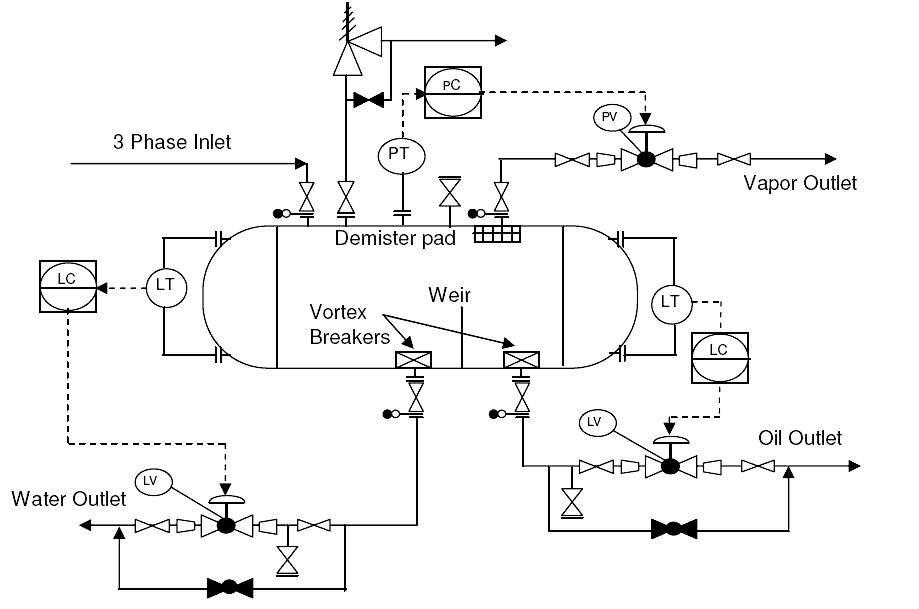
Image Source: Pinterest.com
Valve symbols in process and instrumentation diagrams
What is P&ID?
The process flow diagram (PFD), which explains a relatively typical flow of plant processes about significant equipment of a plant facility, and the piping and instrumentation diagram have a close relationship. According to wiki, A piping and instrumentation diagram shows a processing plan’s piping, process equipment, instrumentation, and controls. Pipes and other aspects of a physical process flow are shown. These diagrams are popular in engineering.
P&IDs VS. PFDs
PFD shows process engineers how chemical fluids travel through a chemical process’s major equipment. The process flow schematic doesn’t depict a plumbing facility or pressure-flow instruments. P&IDs build, manage, and repair chemical processing plants. Piping, mechanical, civil, electrical, and instrumentation engineers use them extensively.
How does P&ID work?
P&ID symbols and codes indicate each process instrument. This code and symbol can help us identify the device, its location, and its role in the process. Iso standard for P&ID symbols instruments and identifying letter codes are needed to read P&IDs.
Piping and instrumentation diagram example
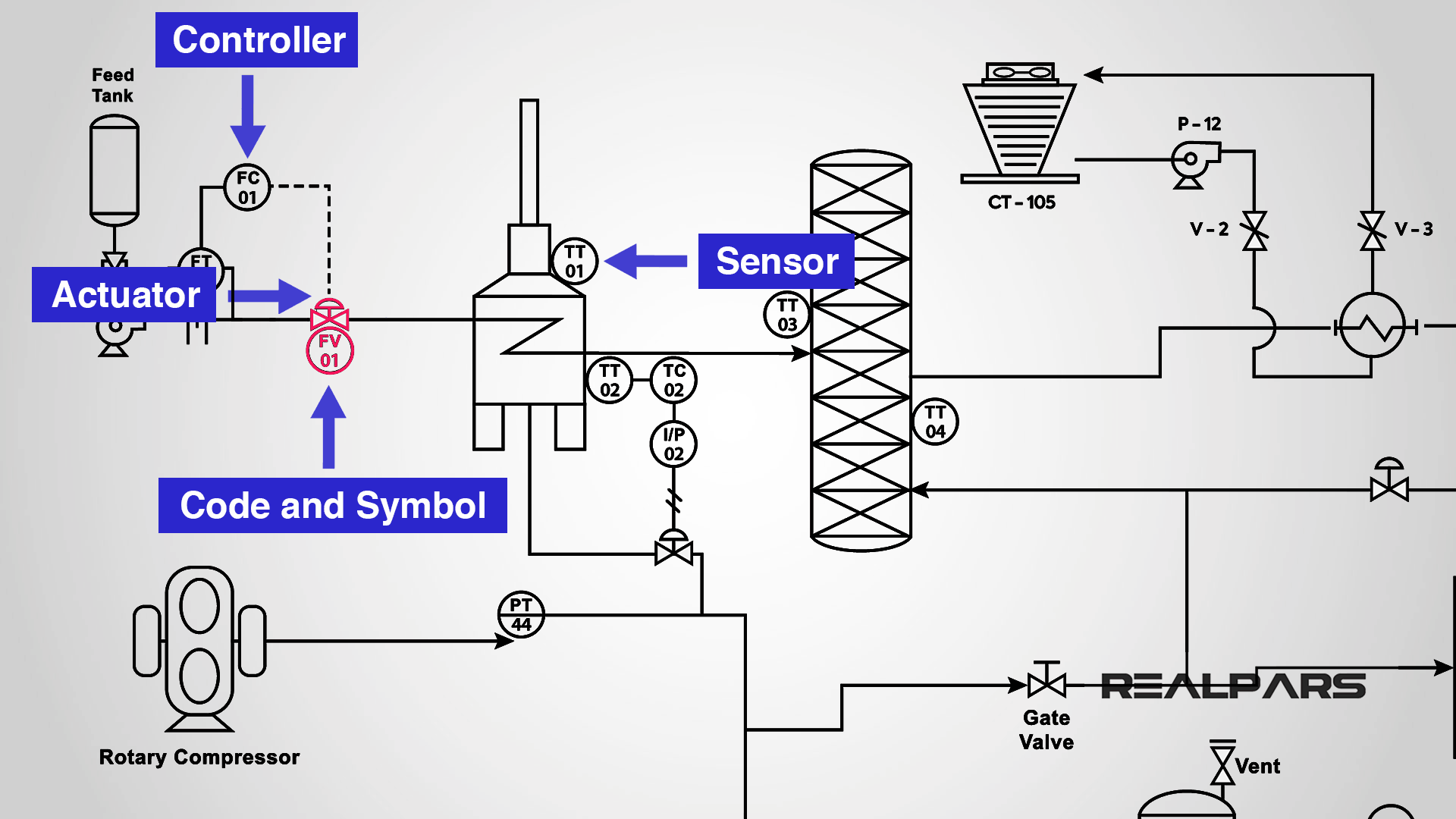
Image Source: Realpars.com
Material processing P&IDs include all physical component details:
- Process equipment specifications (turbines, fans, vessels, pumps, etc.)
- Piping and line specifications and process piping system components (fittings, flanges, valves, actuators, insulation, etc.);
- Indicators, gauges, alarms, interlocks, control input, and output.
What do P&ID & PID Symbols Include?
P&IDs use standard shapes and symbols:
- Equipment Symbols
P&ID equipment consists of several pieces that don’t fall into the categories of other items.
- Piping Symbols
Plastic or metal pipes transfer liquids/gasses.
- Vessel Symbols
Vessels alter fluid properties.
- Heat Exchanger Symbols
Heat exchangers transport heat between areas.
- Pump Symbols
Pumps transfer fluids between objects.
- Instrument Symbols
Instruments measure temperature, flow, tilt, pressure, etc.
- Valve Symbols
They regulate fluid flow by shutting, opening, or gently obstructing piping channels.
Valve symbols on P&ID
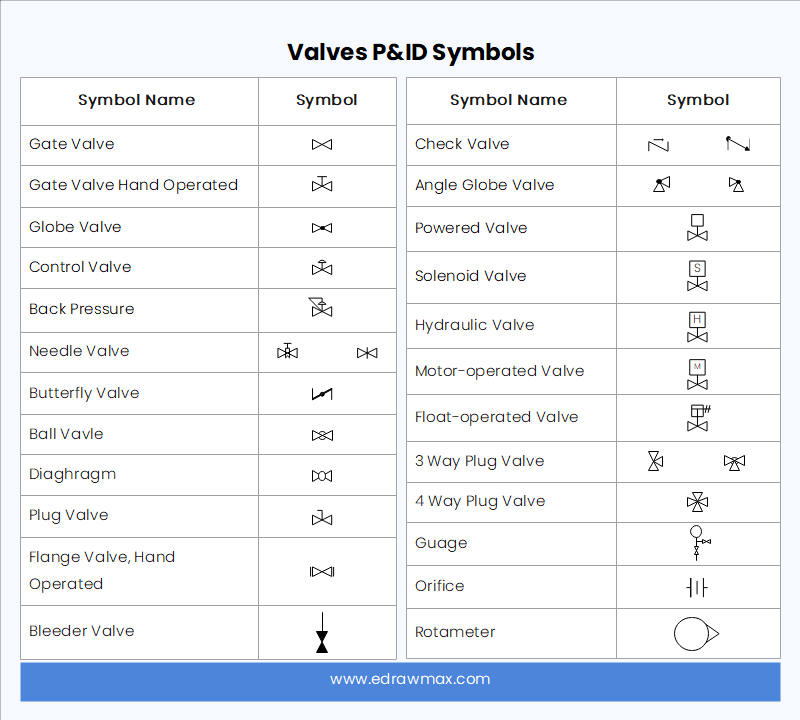
Image Source: Edrawmax.com
They manage fluid flow by closing, opening, or slightly obstructing channels in a piping setup, much like the valves in our hearts. Rotameters, orifices, and various types of valves fall under this category.
Types of valves with P&ID symbols
A valve is an element in a piping system that regulates the flow.
- A rotary valve turns only at 90°
- Linear valves operate when the stem is vertical, and the packing box is above.
- Self-actuated valves keep set-point pressure in pipelines within predetermined ranges.
P&ID valve symbols: How to read?
The comprehensive engineering procedures are described using a P&ID. Below are some ways that will help you in reading them:
- Download the P&ID symbols and meaning
- Familiarize the symbols
- Practice with a sample online
- Consult an expert
2-way valve symbol

Image Source: Assured Automation
Two-way ball valves block between two cup-shaped seals called “seats.” Open media passes through straight bores in balls. The ball stops media flow when rotated 90°.
3 & 4-way valve symbols
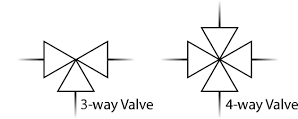
Image Source: Assured Automation
A 3-way valve lets fluid flow to and out of an actuator. The third position on some 3-way valves shuts all ports. Double-acting actuators need 4-way valves. A 4-way valve simultaneously pressurizes and exhausts two openings.
Other types of valve symbols
Actuators
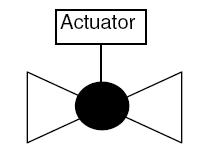
Image Source: EnggCyclopedia
Actuators transform control signals into mechanical motion using power. Actuators are everywhere—from car door locks to airplane ailerons.
End connections
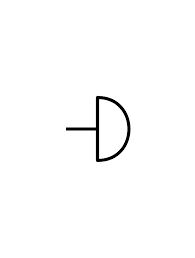
Image Source: Electra Cloud
The flange’s end connection provides a compact and efficient link between the valve and pipe, which describes how the flange is joined to a nearby line.
Process lines
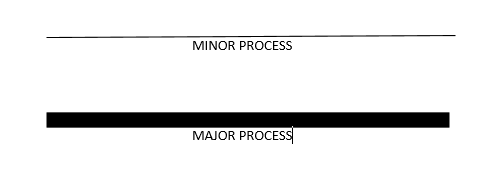
Image Source: Nikolay Bozov
Any coating unit, line, operation, or printing press is a process line. Process lines are one or more activities or unit operations that must coincide or be in sequence to manufacture or change a product.
Signal lines
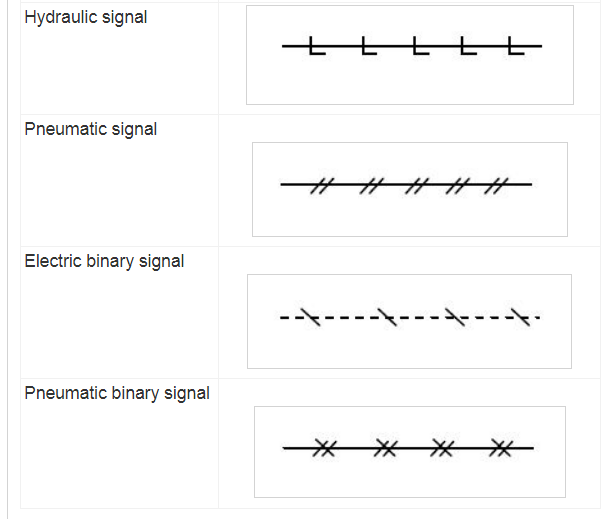
Image Source: Engineers Community
Signal lines identify how the instruments in the process connect. And what type of signal is being used.
Vessels
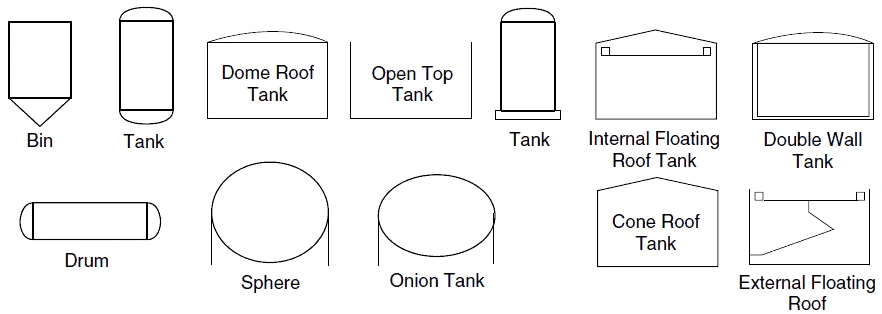
Image Source: Hardhat Engineer
A vessel is used to illustrate a fluid storage container. Tanks, cylinders, columns, bags, and other items for bigger ships are included in the P&ID symbol group.
Other common P&ID Symbols for major process components
Tag numbers
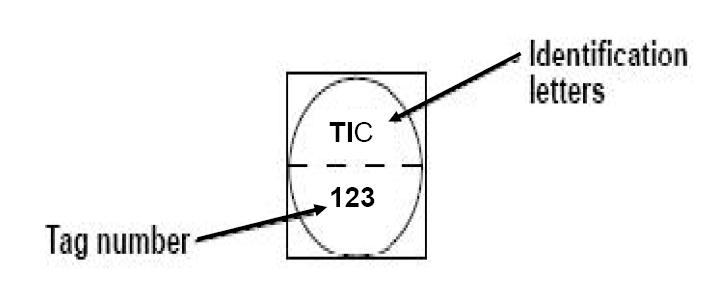
Image Source: Learning Instrumentation and control engineer
The project’s equipment and tagged items are identified by a tag number, assigned, and used on nameplates, drawings, datasheets, and all correspondence.
The symbol for a valve
Ball valve P&ID symbol
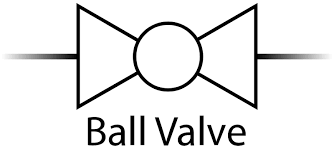
Image Source: Assured Automation
A ball valve shuts off liquid or gas flow using a rotary ball with a bore.
Butterfly valve P&ID symbol
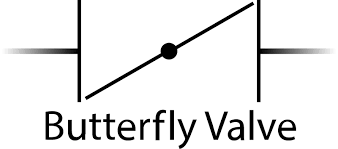
Image Source: Assured Automation
Quarter-turn rotational motion butterfly valves shut off pipeline flow. Butterfly valves can control flow.
Gate valve symbol P&ID
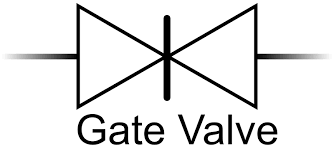
Image Source: Assured Automation
In the fully open position, a gate valve allows full pipeline flow or entirely stops it.
Globe valve P&ID symbol

Image Source: Assured Automation
Globe valves regulate flow, pressure, and flow shutdown. It can also be a check or pressure relief valve.
Plug valve P&ID symbol
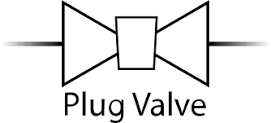
Image Source: Assured Automation
Plug valves are ideal for directional flow control, gas or liquid fuel handling, slurry regulation, and low-pressure, low-temperature services.
Solenoid valve symbol
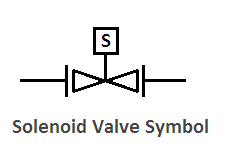
Image Source: Your Electrical Guide
Fluidics uses solenoid valves the most. They stop, release, dose, distribute, or mix fluids.
Relief valve symbol
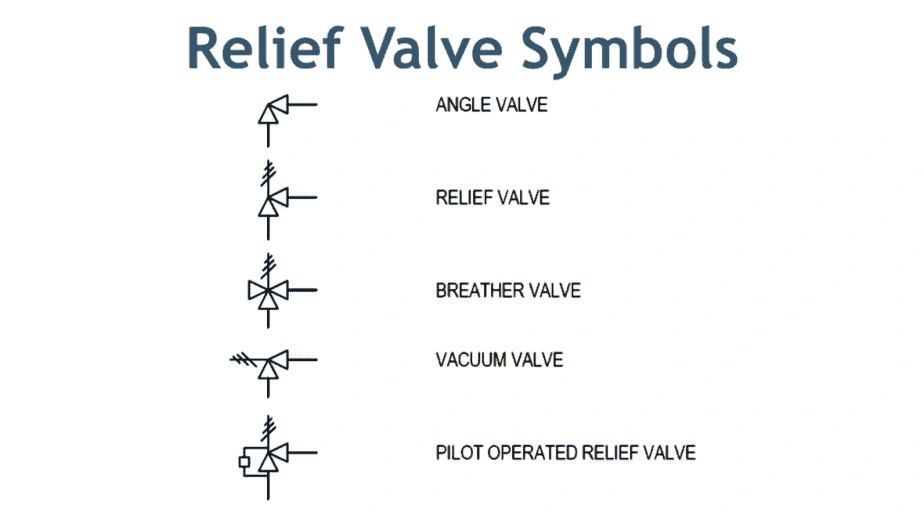
Image Source: Hardhat Engineer
Needle valve symbol
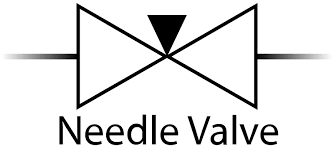
Image Source: Assured Automation
Needle valves regulate gas or water flow in appliances and systems.
Safety valve symbol
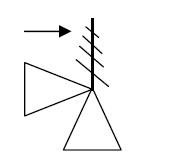
Image Source: EnggCyclopedia
The Safety Valve is the last line of defense against system pressure failure, protecting life and property.
Angle valve symbol
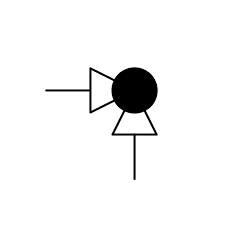
Image Source: Electra Cloud
Angle valves are utilized in boiler feedwater, heater drain, and space-constrained piping schemes as elbows.
Float valve symbol
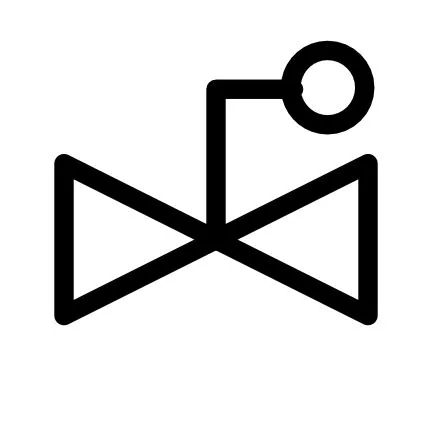
Image Source: Advanced 3D Solutions
Float valves can prevent tanks from overfilling when liquid needs to be diverted rather than discharged in a drain.
Pinch valve symbol
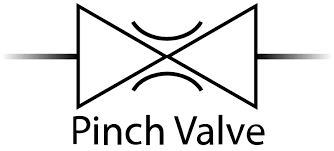
Image Source: Assured Automation
A pinch valve is a 2/2-way valve that stops or controls corrosive, abrasive, or granular material.
Bleed valve symbol
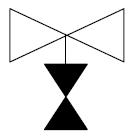
Image Source: Project materials
Bleed valves manually drain liquids or gases from instruments or systems. These valves provide vent tube-controlled outflow direction.
Knife gate valve symbol
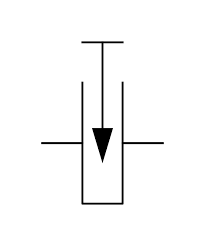
Image Source: Electra Cloud
Knife gate valves isolate and turn off suspended solids-rich systems. Slurry, viscous, corrosive, and abrasive media suit knife gate valves.
Piston valve symbol
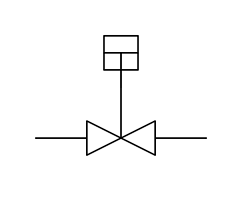
Image Source: Electra Cloud
Power plants, refineries, pulp, and paper mills employ piston valves for saturated and superheated steam and hot water.
P&ID valve symbols: in summary
P&IDs are crucial information transmitters during design. It communicates. Process diagrams convey various engineering information to numerous organizations for many purposes. The chemical process industry values PFD and P&ID preparations. These diagrams show process engineers’ inventive designs. Preparation can save money, improve plant layout, and improve safety.
